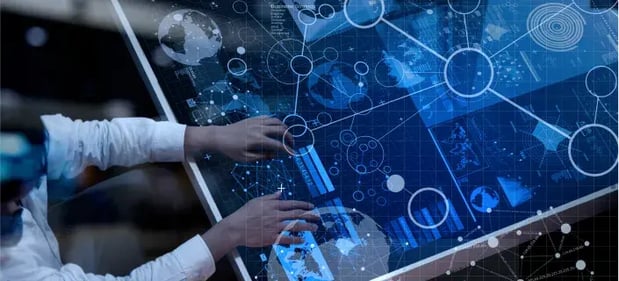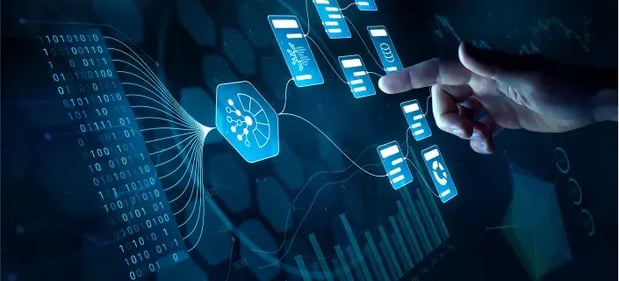
Enterprise Asset Management (SAP EAM)
LeverX is your trusted partner in delivering cutting-edge SAP Enterprise Asset Management solutions tailored to optimize your business's asset performance and enhance operational efficiency.



End-to-End Asset Management with SAP EAM
SAP Enterprise Asset Management (SAP EAM) is a comprehensive software solution designed to help organizations manage and maintain their physical assets throughout their lifecycle. It integrates seamlessly with other SAP modules and provides powerful tools for asset planning, maintenance execution, and analytics. With SAP EAM, businesses can achieve higher asset availability, reduce downtime, and improve overall operational performance.
- With only 12% of companies adequately prepared for future global value chain disruptions, SAP EAM becomes essential in minimizing risks and ensuring uninterrupted operations.
- By 2026, an estimated 70% of G2000 companies will leverage AI for risk-based operational decision-making, compared to the current 5%, highlighting the significance of SAP EAM in enabling organizations to make data-driven decisions and optimize asset performance.
- Global organizations that invested in digital transformation experienced an astounding 98% reduction in business risk, making SAP EAM a vital component for businesses to embrace digital transformation, drive efficiency, and minimize risks.
Why Your Business Needs SAP EAM?
SAP EAM Solutions
Asset Performance and Maintenance
SAP EAM solutions for asset performance and maintenance are designed to ensure reliable operations and extend asset lifecycles. These solutions:
- Monitor asset performance in real-time to identify potential failures and reduce unexpected downtime.
- Implement predictive maintenance with advanced analytics and machine learning.
- Streamline maintenance planning and execution by optimizing schedules, resources, and spare parts procurement.
Show more
-
SAP S/4HANA Asset Management
Advanced tools for maintenance planning, execution, and tracking.
-
Predictive analytics to prevent failure and optimize maintenance.
Field Service Management
SAP EAM solutions for field service management empower technicians and field teams to deliver efficient and timely asset servicing. These solutions:
- Provide mobile access for technicians to manage work orders and asset information on the go.
- Enhance field operations with intelligent scheduling and dispatching of technicians.
- Ensure collaboration between field teams and service managers to improve task efficiency.
Show more
-
SAP Service & Asset Manager
Mobile-first solution for managing field service tasks and accessing offline data.
-
Intelligent scheduling and real-time data for efficient service delivery.
-
SAP Crowd Service
Crowdsourcing solution for accessing external expertise when needed.
Resource Allocation and Scheduling
SAP EAM solutions for resource allocation and scheduling optimize the use of workforce, equipment, and materials across projects. These solutions help:
- Balance resource utilization to minimize downtime and maximize productivity.
- Enhance scheduling accuracy with real-time updates and integrated planning.
- Streamline project execution by optimizing resource allocation across multiple tasks.
Show more
-
Ensures efficient use of human resources, materials, and equipment by optimizing project schedules.
Collaborative Asset Management
SAP EAM solutions for collaborative asset management focus on enhancing communication between stakeholders to improve asset performance. These solutions help:
- Facilitate collaboration between internal teams, partners, and suppliers for efficient asset operations.
- Leverage geographic data for location-based asset planning and optimization.
Show more
-
Enhances communication and knowledge sharing across stakeholders.
-
SAP S/4HANA for Spatial Asset Management
Integrates GIS data for location-based asset management.
Strategic Asset Investment Management
SAP EAM solutions for strategic investment management empower organizations to make informed decisions about asset-related investments. These solutions:
- Streamline investment planning with tools for budgeting, forecasting, and scenario analysis.
- Track investment performance in real-time to identify risks and maximize returns.
- Optimize capital expenditure by prioritizing high-return projects and reducing unnecessary costs.
Show more
-
Provides real-time financial insights to support strategic investment decisions.
Linear Asset Management
SAP EAM solutions for linear asset management help businesses efficiently maintain and monitor extensive networks of linear infrastructure such as pipelines, railways, power lines, and roadways. These solutions:
- Enable real-time monitoring of asset performance and health to detect potential failures before they escalate.
- Improve operational reliability and safety by segmenting and analyzing linear assets with advanced tools.
- Enhance compliance and risk management with real-time insights and predictive
maintenance. - Minimize service disruptions by optimizing maintenance scheduling and emergency response.
Show more
-
Advanced tools for defining, monitoring, and maintaining linear assets, ensuring smooth operations across extensive networks.
-
SAP Intelligent Asset Management
Cloud-powered solutions that harness the power of IoT and machine learning for predictive maintenance, and intelligent tools for risk assessment to optimize maintenance.
-
SAP Geographic Information System
Real-time, spatial visualization of linear assets with their location analytics.
-
A solution that can be used specifically for the efficient maintenance of linear assets located in fields through optimized work scheduling, remote monitoring, and mobile work execution.
Optimize asset performance and maintenance with SAP EAM and AI
- Analyze data from IoT sensors in real-time to identify irregular equipment behavior and detect early signs of potential failures;
- Perform automated inspections to reduce manual errors and equipment failures;
- Streamline the creation and scheduling of maintenance orders, improving resource allocation and operational efficiency.
How Your Business Will Benefit from SAP EAM
Comprehensive asset lifecycle management
Optimized asset performance
Streamlined maintenance planning and scheduling
Integrated inventory management
Real-time data and analytics
Compliance and regulatory adherence
Seamless integration with SAP modules
Mobile and offline capabilities
Scalability and flexibility
Enhanced asset visibility and control
Improved resource utilization
Proactive maintenance and reduced downtime
How We Can Help

Consulting

Implementation

Integration

Support

Application management
Industries That Benefit From SAP Enterprise Asset Management (SAP EAM)
Energy & utilities
Oil, gas, & chemicals
Industrial manufacturing
Transportation & logistics
Consumer packaged goods
Why LeverX?
Proven track record
Industry experts
SAP partnership
Quality and security
Investment in innovation
Flexibility
Implementation Roadmap
- Current Processes Evaluation: Assess existing business processes and identify the organization's needs.
- Defining Technical Requirements: Create a detailed specification of the functional and technical needs of the new system.
Discover
- Setting Goals and Objectives: Establish and agree on the goals to be achieved throughout the project.
- Assembling the Project Team: Appoint team members and define their roles and responsibilities.
- Project Plan Development: Create a comprehensive plan that outlines project phases, timelines, resources, and key performance indicators.
- Budget Determination: Estimate and approve the budget.
- Specifications Preparation: Develop the technical and functional specifications for the development team.
Prepare
- Ensuring Business Requirements are Met: Check that SAP EAM aligns with business requirements and project objectives.
- Data Validation: Verify the accuracy and compliance of the data.
Explore
- Data Migration: Transfer data from existing systems to the new one.
- System Configuration: Set up the solution according to requirements and specifications.
- Customization: Develop additional features and modules, if the standard solution does not meet all needs.
- Integrations: Configure SAP EAM to work with other IT systems and applications.
Realize
- Testing: Perform functional, integration, regression, and load testing to ensure that all works correctly.
- User Training: Organize sessions to help users become familiar with the new system.
Deploy
- System Readiness Check: Verify that the system is ready for operational use.
- Launch: Officially transition to active use of SAP EAM.
- Ongoing Support: Continuously monitor solution performance to identify and resolve any issues.
Run
Frequently Asked Questions
What is EAM software?
What is the difference between SAP ERP and SAP EAM?
What is the difference between EAM and CMMS?
Why do we need EAM?
What is SAP Enterprise Asset Management?
What are the deployment options for SAP EAM?
CONTACT US
If you are looking for an SAP Global Strategic Supplier or Technology Partner for your business, fill out the form below, and we will contact you at short notice.
Contact Us
What happens next?
-
1
An expert will reach out to you to discuss your specific needs and requirements.
-
2
We'll sign an NDA to ensure any sensitive information is kept secure and confidential.
-
3
We'll work with you to prepare a customized proposal based on the project's scope, timeline, and budget.
years of expertise
projects
professionals
Contact Us